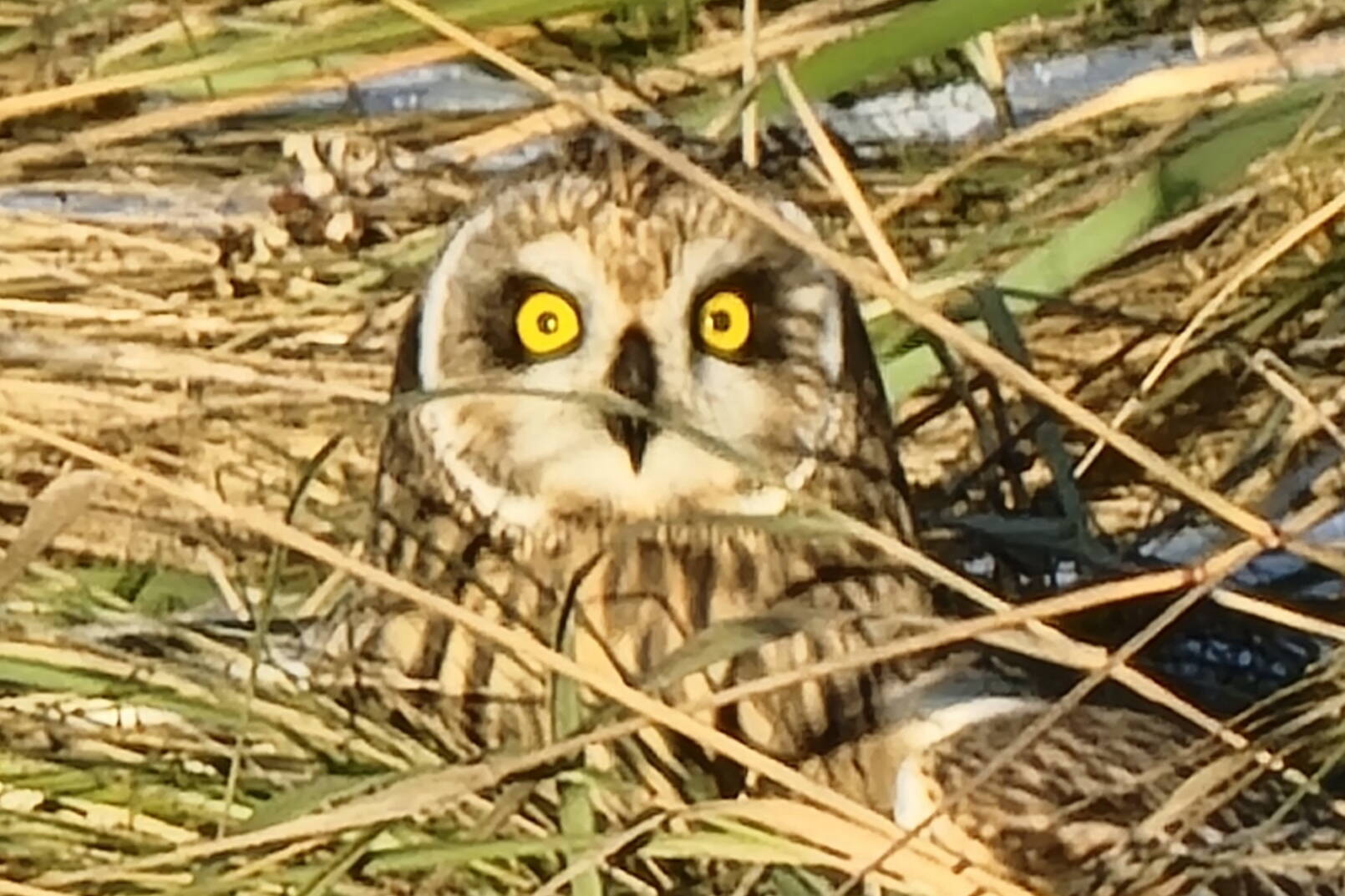In the middle of October, bird watchers estimated about 40 short-eared owls were seen hunting on the wetlands — probably a record number. What was going on? Perhaps several things at once.
There were three consecutive days with very high tides (over 20 feet). Local naturalists know that high waters flood the meadows, driving the voles and other small critters out of their nests and runways. Then we see them as they flee toward higher ground, such as the dike. Super-high tides would obviously flood more area than usual, potentially driving out more voles. If the voles tried to return ‘”home,” the high tide on the second day would drive them out again; ditto on the third day. A veritable feast for the owls.
In addition, several other things may have come together to bring so many owls to the wetlands. Voles are known to go through population cycles, peaking in abundance every few years with low numbers between peaks. If our local vole population was at a high peak, there may have been unusually large crowds of voles scuttling for safety. It is also possible, according to some observers, that weather conditions elsewhere drove more owls than usual into our area, helping account for the startling numbers seen out there.
It was a Big Event…and I missed it. A couple of days afterward, I saw two of the owls pouncing repeatedly on something in the grass. Leftovers from the major exodus?
Then a thoughtful friend brought me a present: an owl pellet of cast-up food remains collected on the wetland. Dissecting that was fun. I found the jawbones of at least four voles, several leg bones (including one femur), an assortment of ribs and small bones, and some plant fragments, all wrapped up in lots of fur. Conspicuous by their absence were all the crania and the rest of the femurs, presumably cast up in different pellets. A well-fed vole! Another pellet, from a different spot, yielded the bones of one hind foot (still articulated) and a variety of other little bones.
Anyone walking on our local trails has seen fly-agaric mushrooms (Amanita muscaria) in many places. There are hundreds of species in the genus Amanita, a few of which are non-toxic (at least to humans), but most of which are toxic (or at least hallucinogenic) to some degree. Toxicity is reported to be strongest in the colorful cap during the time that spores are maturing there, and presumably the toxins help protect the spores from consumers. A local naturalist has noted considerable numbers of dead insects of many types on some fly-agaric caps, but we don’t know if all those insects would have been damaging to the spores or if their deaths were incidental. What drew them all to those caps? Larger critters sometimes eat part of the cap. We’ve seen tooth marks of small mammals and slugs scoop out holes in the top. Are they resistant to the toxins? Or do they have such varied diets that a little snack of something toxic is tolerated? Herbivorous mammals are thought to be able to eat small quantities of toxic plants because they mix their diet with many other plants.
Here at home, most of the juncos have gone somewhere else. So nobody scatters seeds from the feeder over the pond and the ducks perch forlornly on the dam, looking wistfully at the un-visited feeder and the empty pond surface. One junco still visits occasionally, rarely taking the plentiful millet seeds, their usual favorite, in the feeders. Instead, I see them up on an exposed beam over the deck, pecking avidly at something. That’s where the chickadees and nuthatches commonly take the sunflower seeds and use the beam as an anvil while they whack open the seed husks to extract the kernel. I suspect that the junco is scavenging up broken bits of sunflower kernel. But why the birds that worked so hard to open the seed husks left the bits behind is a puzzle.
A walk down Sandy Beach on a pleasant day brought sightings of goldeneyes, mergansers, and mallards, but best of all was a flight of swans headed south along the channel. Returning on the Treadwell Trail, we noted several blueberry bushes with rusty-colored foliage over the whole bush except for a few small branches. Those exceptions bore slightly larger leaves with a variegated green and yellow pattern, the yellow part closest to the big veins. We made sure that the exceptional branches were indeed part of the same bush. That leaves us with another question or two: why were some of the leaves so different from the majority, and why were some bushes covered with leaves of this odd dark rusty color? I always seem to end up with so many questions! Insatiable curiosity, I guess.
• Mary F. Willson is a retired professor of ecology. “On The Trails” appears every Wednesday in the Juneau Empire.

